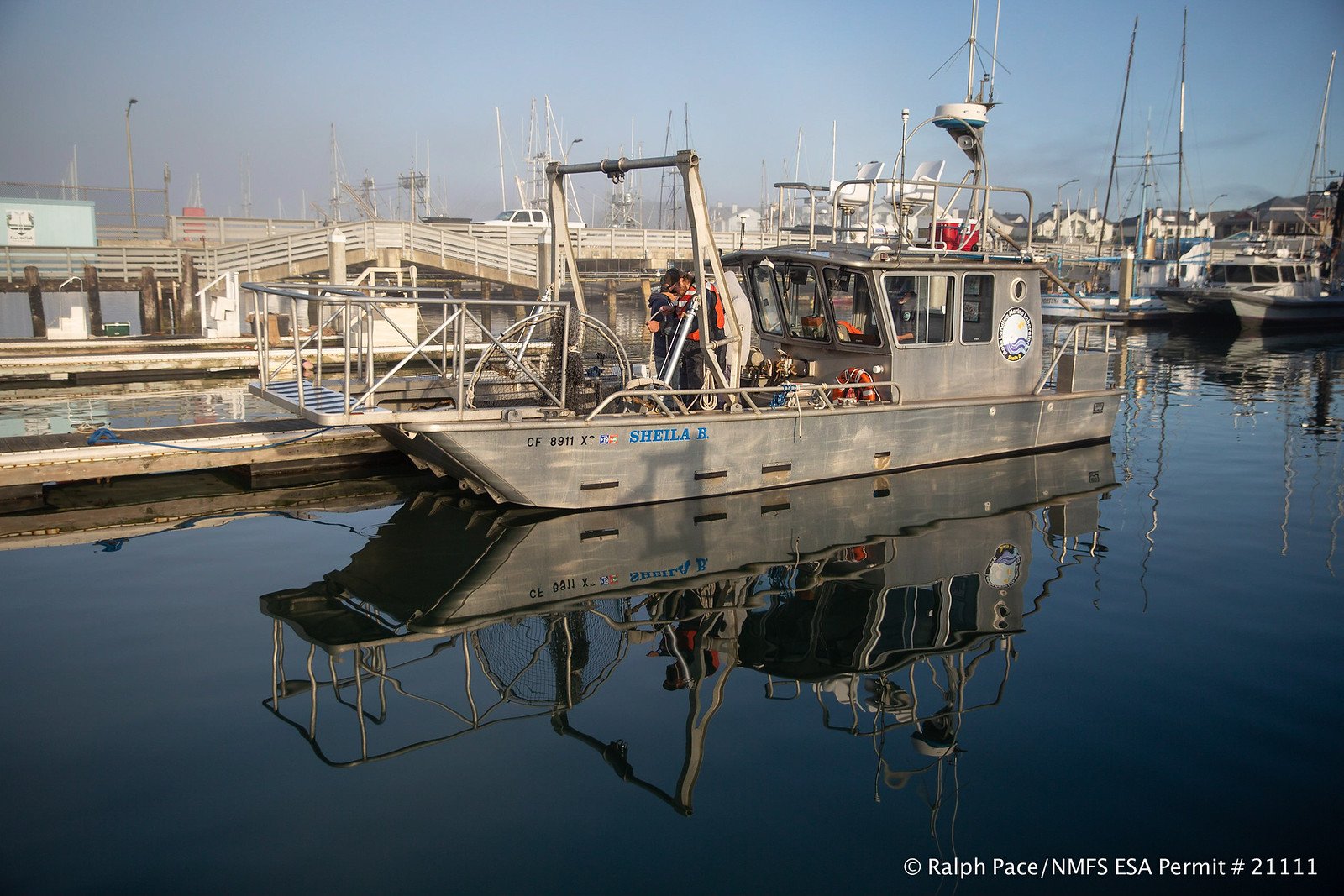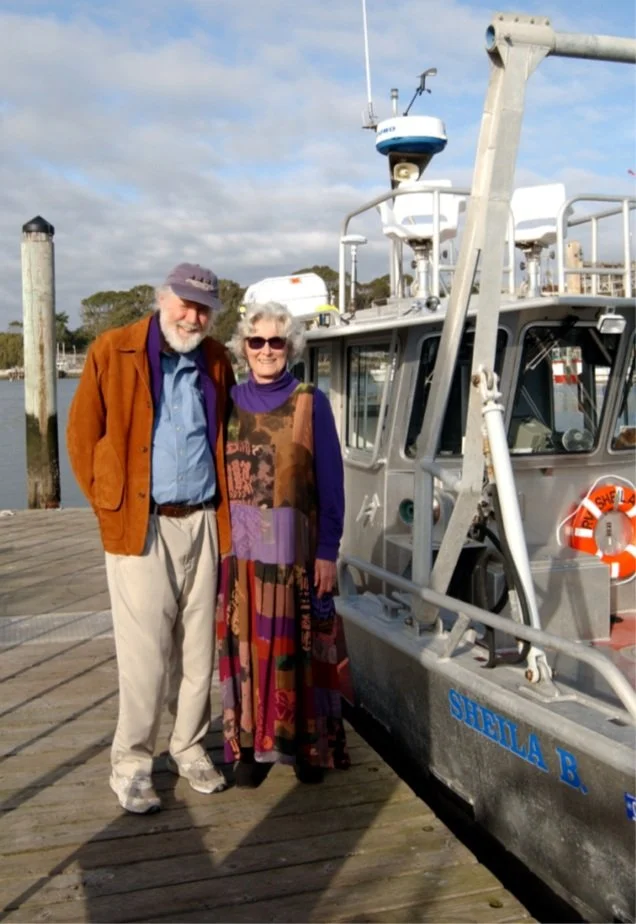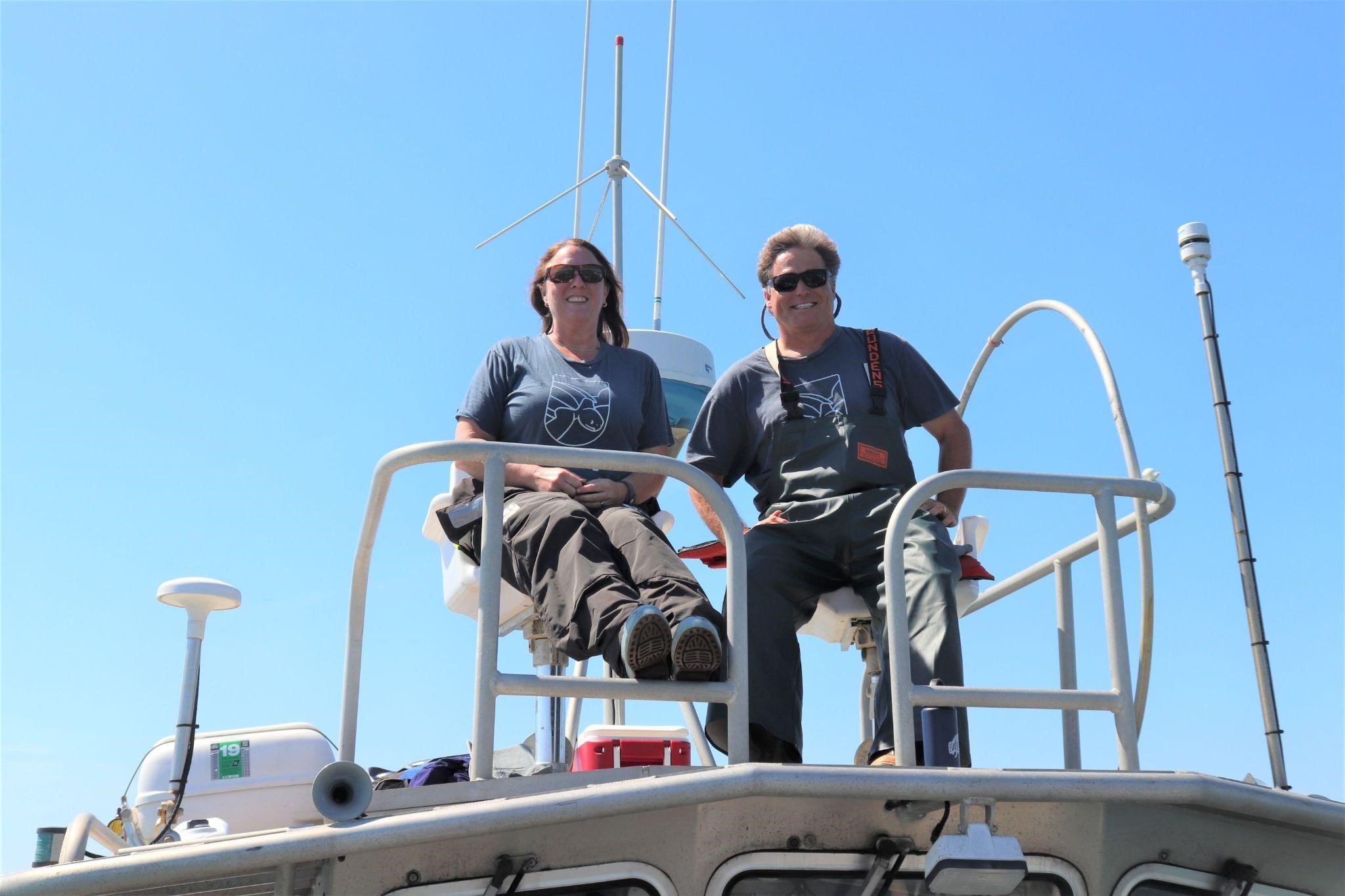John Douglas (JD) is the Small Boat Operations Coordinator and Research Vessel Captain for Moss Landing Marine Labs (MLML)/San Jose State University. His career at MLML Marine Operations began as a Graduate Student Assistant in 1990. A permanent position was created for him in 1994 when he assumed responsibility for all aspects of boating safety, vessel operator training and boating program administration in addition to his Captain duties. He is a founding member of the Scientific Boating Safety Association and a Board member for 10 years. When he is not on the water he enjoys going fast on motorcycles, wrenching on old cars and spending time with his family.
Since 2021, JD has worked with Upwell as captain of the Sheila B. research vessel while monitoring for leatherback sea turtles in the Pacific Northwest. The Sheila B. is a boat that has been specially engineered for the research work that it carries out. In this blog, JD gives us insight into its history and its evolution into the perfect vessel for leatherback sea turtle monitoring.
The genesis of the unique research vessel the Sheila B. dates to the mid-1990s and the advent of California State University Monterey Bay (CSUMB). Shortly after the birth of that campus, CSUMB joined the consortium of State universities that make up Moss Landing Marine Laboratories (MLML). MLML is a graduate school with the mission to Provision the Pioneers of the Future in Marine Science. Safe and reliable access to the marine environment is essential. The new consortium member wanted a high capacity, shallow draft boat to accommodate class groups for work in Elkhorn Slough. They specifically requested MLML Marine Operations purchase and maintain a pontoon boat for that purpose. Marine Ops personnel sought to meet this request with a more robust vessel offering a wider range of capabilities.
In the summer of 1999 we started brainstorming a list of bid specs for the new boat and researching the market. The William E. Munson Company quickly came to the forefront as a respected builder of sturdy, customizable workboats. By August 2000 we were under contract. MLML Small Boat Operations took delivery in June 2001. Our Munson boat went into service directly and saw extensive use.
Around this time a former MLML Vertebrate Ecology lab student and their NOAA colleagues came around with funding and a mission to study Leatherback Sea Turtles in Monterey Bay. Scott Benson, Peter Dutton, Scott Eckert and team defied expectations and successfully captured and tagged a free ranging Leatherback from the research vessel John H Martin in September 2000. It was a historic event. The vessel, however, was not ideally suited to the task. Not to be dissuaded, they returned with a floating ‘platform’ to support study animals during handling and chartered the research vessel Ed Ricketts, a lobster boat with better waterline access. It was still an imperfect arrangement. Through some combination of luck and determination we managed the second-ever Leatherback capture with satellite tag deployment that season. The floating platform did not survive. That experience made clear the need for a better tool and techniques.
Our new Munson boat looked promising, if not purpose built. The landing craft design of the Sheila B allows great waterline access. The NOAA team and MLML Operations staff began experimenting with capture methods specific to the design. Through iterations over the course of the next few years, they devised techniques and vessel modifications to streamline the process and improve safety for turtles and crew.
A talented, temperamental fabricator named Tom Carr came up with a fabulous design to outfit the bow door with hydraulic rams with the geometry and structural integrity to stabilize the door through a wide range of motion in open water. Tom is also credited with designing and installing a “bow walk” to position science crewmembers forward of the bow for net handling during captures. He fabricated our a-frame with secondary mount points at the center of the deck to allow lifting animals for weighing. More recent iterations of this work are further improved by the design and installation of a deck mount scale allowing effortless measurement of this parameter, thanks to financial support and motivation from Upwell.
Who is Sheila?
For the first few seasons the Sheila B was simply called the MLML Munson boat. We asked the Moss Landing students and researchers for better ideas. The best suggestion was to dedicate the boat to our highly regarded former librarian, Sheila Baldridge. Sheila was the head librarian from 1978 to 1994. Her legacy of tireless support of students and researchers made her a fitting namesake for this new boat intended as an accessible resource to facilitate wide ranging marine science endeavors. And it’s got a nice ring to it!
Sheila and her husband, Alan, were a dynamic duo of academic excellence in Monterey Bay. In addition to being a fantastic naturalist, Alan was the head Librarian at Hopkins Marine Station. Together they influenced generations of researchers in the region. To read more about Sheila’s career at Moss Landing Marine Labs please see the Library’s web page here.
Not long after we affixed the name to the hull, a kayaker paddled alongside in Moss Landing Harbor with a concerned expression. They were familiar with the name and asked, “Is Sheila okay?” Rest assured it was not a posthumous dedication. Sheila is alive and well!
Other projects
While the NOAA/Upwell Leatherback Sea Turtle Ecology and Assessment project has been foundational to the Sheila B, she boasts literally hundreds of other successful missions. Her ability to deploy and recover gear is exceptional and she makes a superb dive vessel. Her high capacity, shallow draft design allowed deployment and recoveries of railroad wheel anchors to secure moorings throughout Elkhorn Slough creating a novel biogeochemical observatory with a team from MBARI. Data from this suite of instruments was readily available in near real time. It reversed common assumptions about regional nutrient inputs.
The same boat that clears the Hwy 1 Bridge at Elkhorn Slough sailed under the Golden Gate Bridge from Moss Landing to serve as a mobile surgical center in Redwood City for implanting acoustic tags in Harbor Seals. Very few vessels have that range of capabilities. She also released the Great White Shark from Monterey Bay Aquarium after the worlds’ most successful husbandry and display.
She calibrated coastal radar installations for measuring high frequency surface currents (CODAR) by scribing the most precise radius that technicians had ever seen off shore-side installations in Big Sur. Geological oceanographers have collected sediment cores in shallow water and sub-bottom profiles via towed array. Physical Oceanography students recovered Acoustic Doppler Current Profilers (ADCPs) from across Monterey Bay, landed the craft on our boat ramp and offloaded the gear, all before lunch.
Her high transit speed also facilitates MLML Student projects in Stillwater Cove and Carmel Bay. Subtidal researchers census and collect juvenile rockfish in kelp forests while Phycologists conduct ecological experiments in algal communities and transport coolers full of samples without having to drag them across the beach.
The Future is Bright
After 20 years of ocean service the Sheila B’s original Mercruiser diesel engines were nearing the end of their service life. The last few seasons saw excessive costs and herculean efforts on the part of Operations personnel to keep them running through leatherback tagging seasons. Thanks in large part to generous support from Upwell, two new 225 hp Yanmar engines and sterndrives were purchased and installed in late 2022. Early performance tests show promising results with smooth power delivery and greater overall speed. Combined with greater reliability and higher efficiency, these new engines will allow us to honor the legacy of Sheila B for many years to come.
By John Douglas, Small Boat Operations Coordinator and Research Vessel Captain for Moss Landing Marine Labs (MLML)/San Jose State University
Cover Photo by Karin Forney, NOAA







